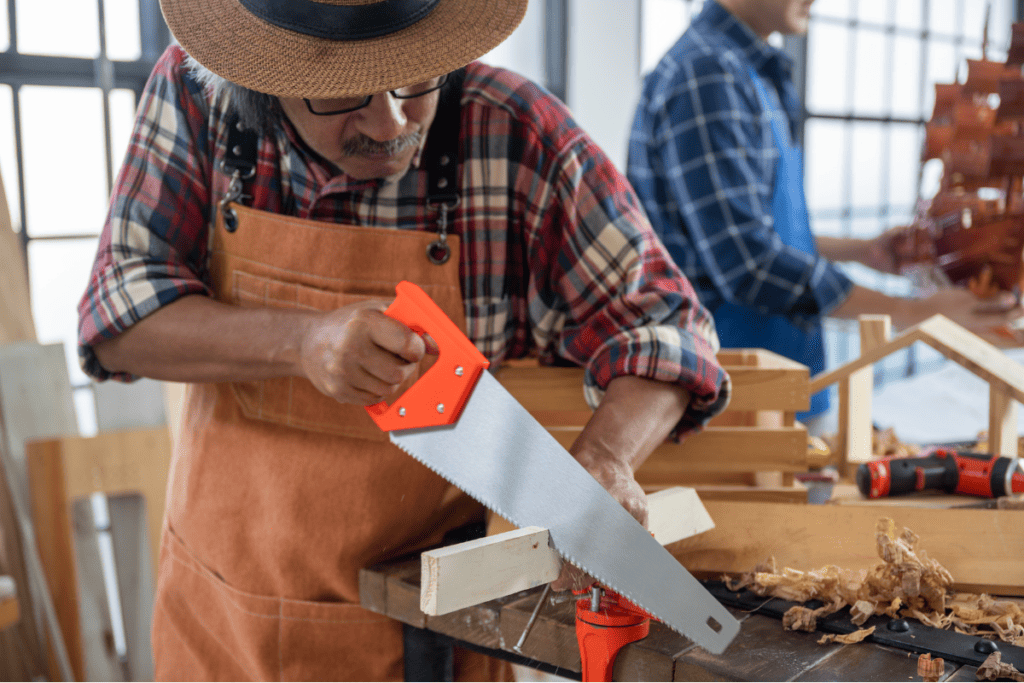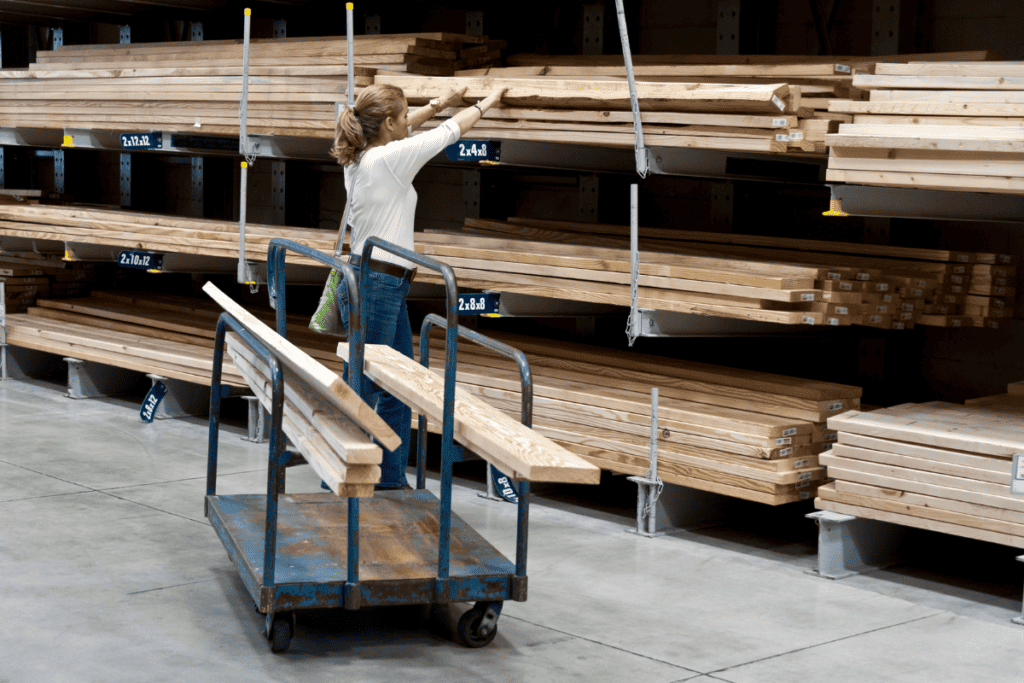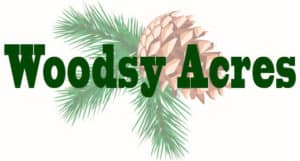
Whether crafting a rustic coffee table, a cozy bookshelf, or even custom shelving for your plant collection, choosing the suitable wood is crucial. Pine wood for DIY projects often takes center stage when it comes to versatility and warmth. But not all pine is created equal, and picking the best type for your project can make all the difference. Let’s look at pine wood and discover how to select the perfect boards for your next creation.
Before we begin, what is the best pine wood for DIY projects? Eastern White Pine is known for its fine grain and smooth texture, making it fantastic for indoor furniture and decorative pieces. On the other hand, Southern Yellow Pine, with its denser and harder qualities, is your go-to for projects requiring durability, like outdoor furniture.
Remember, the type of pine you choose should reflect the purpose and location of your final piece.
Advantages of Using Pine Wood for DIY Projects
Why pine, you ask? Beyond its natural beauty, pine is relatively affordable, widely available, and easier to work with than hardwoods. Pine makes it a favorite among DIY enthusiasts. Its light color offers a fantastic canvas for stains and paints, allowing you to tailor the look to your preferences.
When selecting pine, consider the project at hand. Will it live indoors or face the elements outside? Does it need to support a lot of weight, or will it serve more as a decorative piece? Keep these questions in mind as you shop for pine wood.
Types of Pine Wood
| Type of Pine | Scientific Name | Region Grown | Common Usage |
| Eastern White Pine | Pinus strobus | Northeastern United States, including the Great Lakes region. | Widely used for interior trim, furniture, and construction due to its fine grain and versatility. |
| Western White Pine | Pinus monticola | Pacific Northwest and Northern Rocky Mountains | Important for timber production, used in construction, millwork, and occasionally for paper. |
| Sugar Pine | Pinus lambertiana | West Coast, particularly California, and Oregon | Known for its large size and straight grain, used in woodworking, cabinetry, and high-quality lumber. |
| Ponderosa Pine | Pinus ponderosa | Western United States from the Pacific Coast to the Black Hills. | Versatile, used for construction lumber, plywood, and pulp for paper. It’s also valued for its aesthetic appeal in furniture and flooring. |
| Lodgepole Pine | Pinus contorta | Western North America, especially in the Rocky Mountains and Pacific Northwest. | Used for poles, posts, construction lumber, and sometimes for paper production. |
| Slash Pine | Pinus elliottii | Southeastern United States. | Valued for timber and pulpwood, also used in construction and for making crates and pallets. |
| Longleaf Pine | Pinus palustris | Southeastern United States, primarily Coastal Plain from Virginia to Texas. | Historically used for shipbuilding, it is now used for high-quality timber, flooring, and long fibers in paper manufacturing. |
| Shortleaf Pine | Pinus echinata | Eastern United States, from New York to Texas. | Used for lumber, plywood, and pulpwood. It’s more resistant to fire and disease compared to other southern pines. |
| Norway Pine or Red Pine | Pinus resinosa | Northeastern United States, especially around the Great Lakes. | Used for construction lumber, poles, and paper production due to its tall and straight growth. |
| Jack Pine | Pinus banksiana | Primarily found in the Northeastern United States and Great Lakes region. | Often used for pulpwood and rough construction materials. Its wood is also utilized for making crates, pallets, and sometimes in the manufacturing of rustic furniture. |
| Jeffrey Pine | Pinus jeffreyi | Primarily found in California, western Nevada, and Oregon, especially at higher mountain elevations. | Similar to Ponderosa pine in its uses, Jeffrey pine wood is used for construction lumber, paneling, and sometimes in furniture. It is prized for its appearance and scent, making it desirable for decorative uses as well. |
Can You Use Pine Wood for Crafts?
Pinewood works great for crafts. It is a very popular choice for beginners and DIY projects. It is excellent for building anything from a picture frame to a birdhouse or rustic shelves. It is affordable and easy to work with, even for those just getting into woodworking.
A word of caution regarding too many knots: while knots and other blemishes can add character to some pine wood for DIY projects, too many can weaken the wood. Be sure to inspect each piece for excessive knots, loose knots, splits, or warping. A few imperfections can be charming, but ensure they won’t compromise your project’s integrity.
WARNING: Pine is very soft and will easily scratch and dent, so it may not be suitable for all projects, especially for anyone needing a more robust and durable material.
Moisture Content
The moisture content of pine wood for DIY projects can affect its stability once incorporated into your project. If it has too much moisture, you might find your masterpiece warping or cracking as it dries. Fortunately, most pine wood bought from big box stores has been kiln-dried. However, whether kiln or air-dried, aim for wood with a moisture content of around 6-10% for indoor projects.
How can I measure moisture content? Consider investing in a wood moisture meter; it can give serious DIYers a leg up regarding moisture control. In my 50-plus years of experience, I’ve only used a moisture meter when milling my lumber or dealing with firewood.
Furniture Projects
When building rustic furniture, I would choose a high-quality White Pine for its smooth finish and the staining pattern I could create. It was also affordable and easy to work with, yet I also knew that my finished pieces would be durable enough to hold up to daily use. Even the tops of various tables, especially if you’re looking for that rustic or even primitive appeal because pine will show nicks, dents, and scratches easily.
Even decorative projects like wall art or small knick-knacks are perfect for softer pine varieties. These projects often benefit from the wood’s natural grain and texture, adding that warm rustic touch to any room.
Where to Buy Pine Wood
Local lumber yards and home improvement stores often offer a wide selection of pine wood for DIY projects. You can handpick each piece, ensuring it meets your criteria. However, don’t discount online suppliers; they can provide access to a broader range of pine types, especially if you want something specific.
Finding local small sawmills that sell you freshly milled pine boards is possible. However, they could be rough cuts and require you to surface them before using. Understand what you’re getting before buying. Are the pine boards kiln or aired dried? If air-dried, how long have they been drying? When pine gets air-dried, a moisture meter could come in handy.

Preparation Tips
Preparing pine wood before starting your project can significantly impact the final result. Sanding the wood with progressively finer grits of sandpaper will create a smooth base for any finishes or treatments. Remember, patience during the preparation phase pays off in the quality of the finished project. The finishing process can take as long or longer than the actual time it takes to build the project.
Once a project is complete, consider various treatments to protect and enhance the pine wood, depending on its purpose. A weather-resistant sealant, such as a marine spar, is a must for outdoor projects. A stain followed by a clear polyurethane coat for indoor furniture can protect the wood while highlighting its natural beauty.
DIY Project Ideas with Pine Wood
Need some inspiration? Here are a few DIY project ideas perfect for pine wood:
- Rustic Coffee Table: Embrace the knots and grain patterns for a story piece.
- End Table or Night Stand: A smaller version of a coffee table yet still offers unique attributes such as drawers or a removable bottom shelf.
- Custom Shelving: Perfect for showcasing your favorite items or organizing your space.
- Garden Planters: Use pressure-treated pine for outdoor durability.
- Wooden Boxes or Crates: These are always favorites for decorating any home, regardless of the theme.
- Simple Country Bench: Great for sitting outside under the porch or inside an entryway or mud room.
- Coat Rack: A practical addition to any entryway and a great way to practice working with wood and hardware. You can create a wall-mounted coat rack by attaching hooks to a beautifully finished pine board. A coat rack is a simple project that teaches basic woodworking skills and allows the introduction of installing hardware to a project.
Final Thought
Choosing the suitable pine wood for your DIY project might seem daunting at first, but armed with the proper knowledge, you can make an informed decision that ensures your project’s success. Whether crafting furniture or adding a decorative touch to your home, pine wood offers the versatility and beauty to bring your vision to life.
Now, it’s your turn to create something amazing with pine wood. Remember, the best projects are those made with passion and patience. Happy DIYing!
If you liked this article, please be sure to check out this article, What is Pine Wood Good For?
Disclaimer: This article was written by a human who also used artifical intellegence (AI) to aid in the generation of some of this content. Therefore, even though we strive to validate all content, there could be errors and inaccuracies and should not be relied upon as a substitute for professional advice.
